One of my most impractical dreams, born from years of travel, is this: I want to decorate each room in my house in the style of a different country. The bedroom would be designed like a chamber in an Indian palace with ornate fabrics, carved wood, and a hint of sandalwood in the air. A bathroom would be straight out of a modern Japanese house, complete with heated floors, a soaking tub, and a smart toilet with more buttons than a remote control. The living room would mimic an Omani majlis, with low divans lining the walls, layered overstuffed cushions, and a tall, elegant coffee pot with a long spout resting on a round brass tray. And the kitchen, of course, the kitchen would be Mexican, with bright tiles, hand-painted Talavera pottery, and a heavy molcajete sitting proudly on the counter like a culinary relic.
I am completely aware that this is impractical and wildly excessive. Which is why I decided to settle just for a molcajete. Well, to be completely honest, I already bought ornately decorated pillowcases from India, a bidet attachment from Amazon, and a gorgeous brass coffee pot from Oman. So really, all I needed now to complete my illusion was a molcajete.
A molcajete, in case you’re wondering, is a bowl-shaped mortar made from volcanic basalt stone, usually with three short legs and a pestle used for grinding. It’s great for making salsas, guacamole, and mole paste – all the things I constantly buy in stores and always regretfully think, “I could have made it at home…”
And no, molcajete cannot be replaced by a blender or a food processor. The rough, porous surface doesn’t just blend, it crushes, tears, and coaxes flavors out of ingredients. Where blenders slice, the molcajete pulverizes, unlocking essential oils and aromas that give food its taste and soul. Most molcajetes sold in the U.S., however, are made from polished marble, smooth, decorative, and entirely missing the point. I wanted a real one: rough, gritty, porous, made from hardened lava rock, and hand-carved in Mexico.
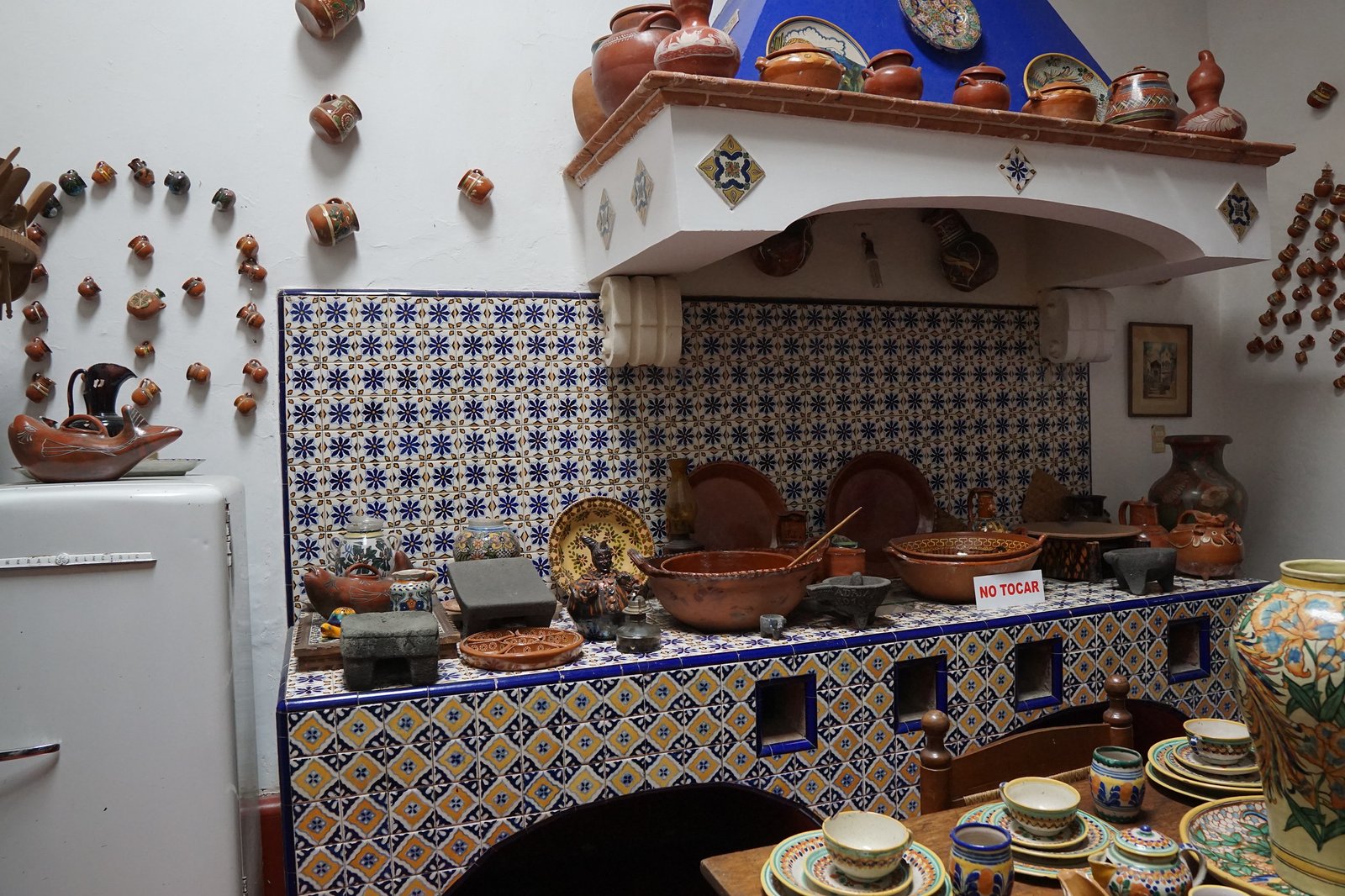
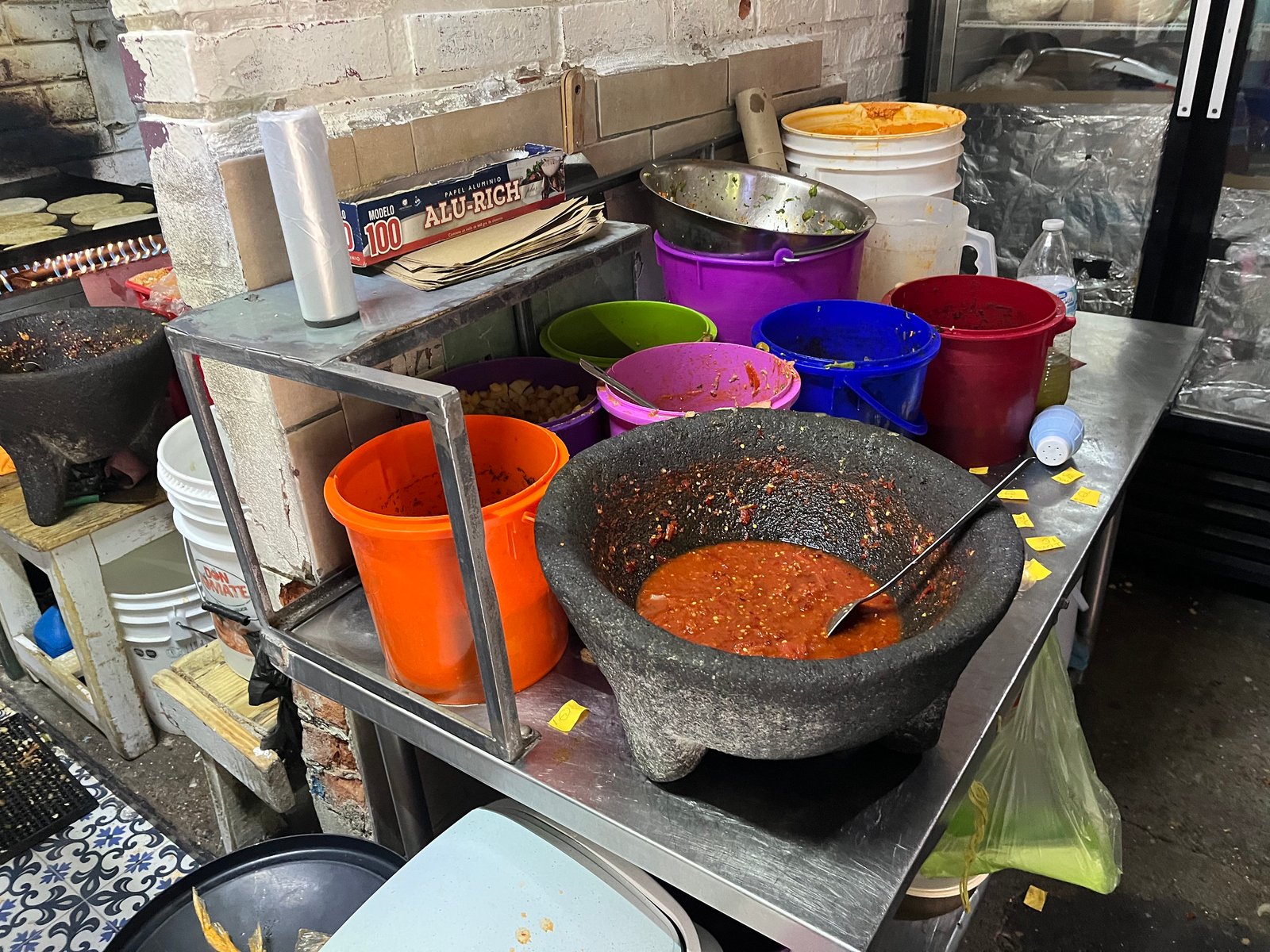
Which meant only one thing. I was going to Mexico to buy a molcajete. OK, so I was already going to Mexico to explore pueblo mágicos, hike up mountains, sweat in a temazcal, and dance with chinelos, but since I just happened to be in the area, I was finally going to find my molcajete.
Comonfort, a small town in Guanajuato, is known as “La Capital del Molcajete” due to its location next to vast deposits of basalt and long-standing artisan traditions of carving this dense rock into iconic Mexican mortar and pestles. Of course, it made sense to wait until we visited Comonfort to buy my molcajete. But we were not visiting Comonfort, we were spending three days in Tepoztlan and one day in Mexico City, and I am nothing if not passionately impatient. So, on the last day of our trip, we went to Artesania Market in Mexico City with only one goal in mind. In fact, I was so single-mindedly focused on my molcajete-acquiring goal that I failed to take any pictures of potential basalt candidates or even of the market itself. The pictures you see in this post are in fact from Comonfort, which we visited only a few months later, after I had already acquired my molcajete.
Does this make any sense? Probably not. Did I care at the time? Also, no. The heart wants what it wants.
I wandered the market for at least an hour until I found the exact molcajete with the perfect color, the perfect size, and the perfect pestle. The surface had just the right amount of texture, with tiny holes that promised excellent grinding. It was exactly as I had imagined it in my culinary daydreams.
The vendor took my $15, wrapped it in an old newspaper, and we stuffed it into Victor’s backpack. And that should have been the end of that story. Except, of course, it wasn’t.
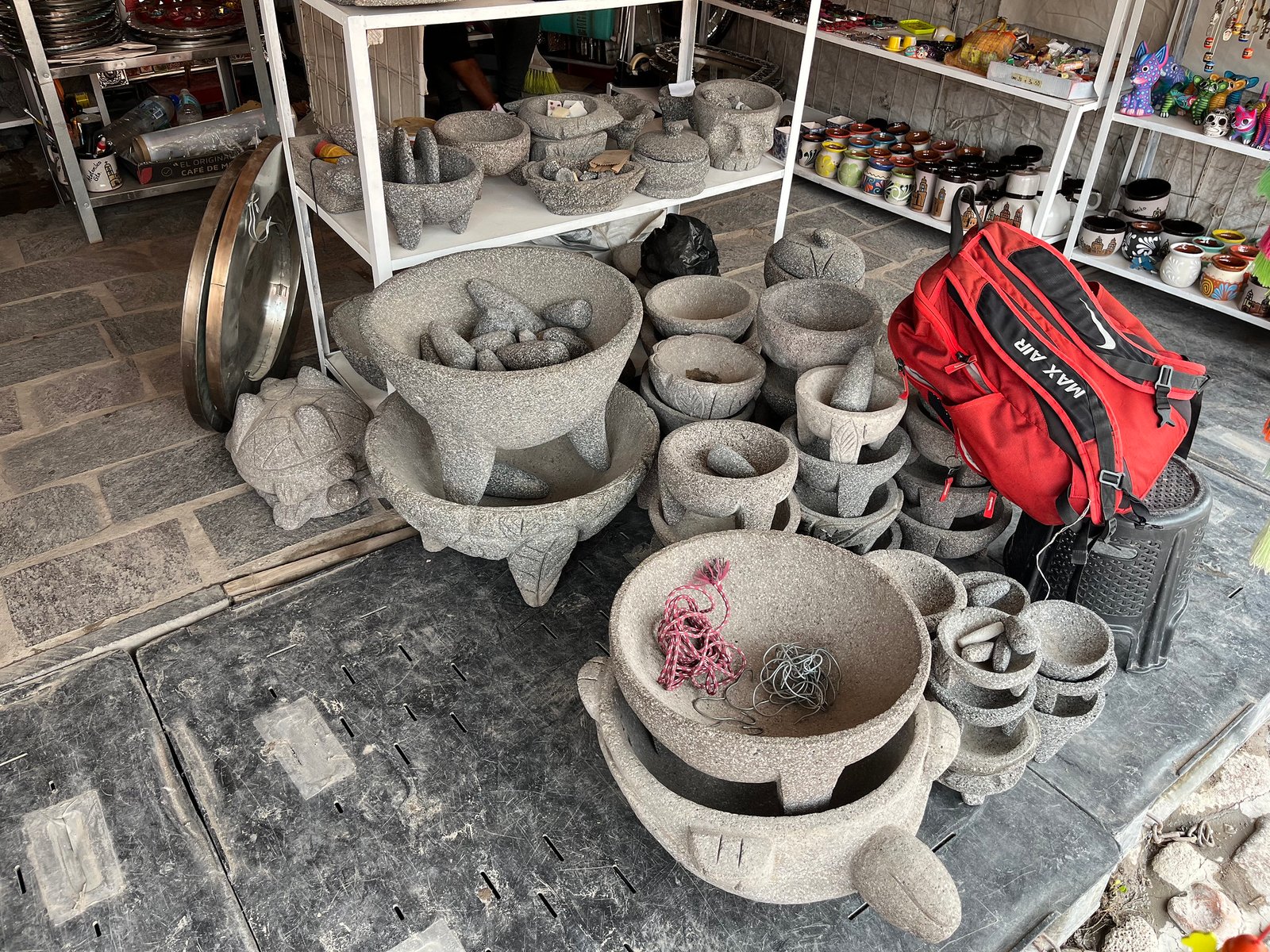
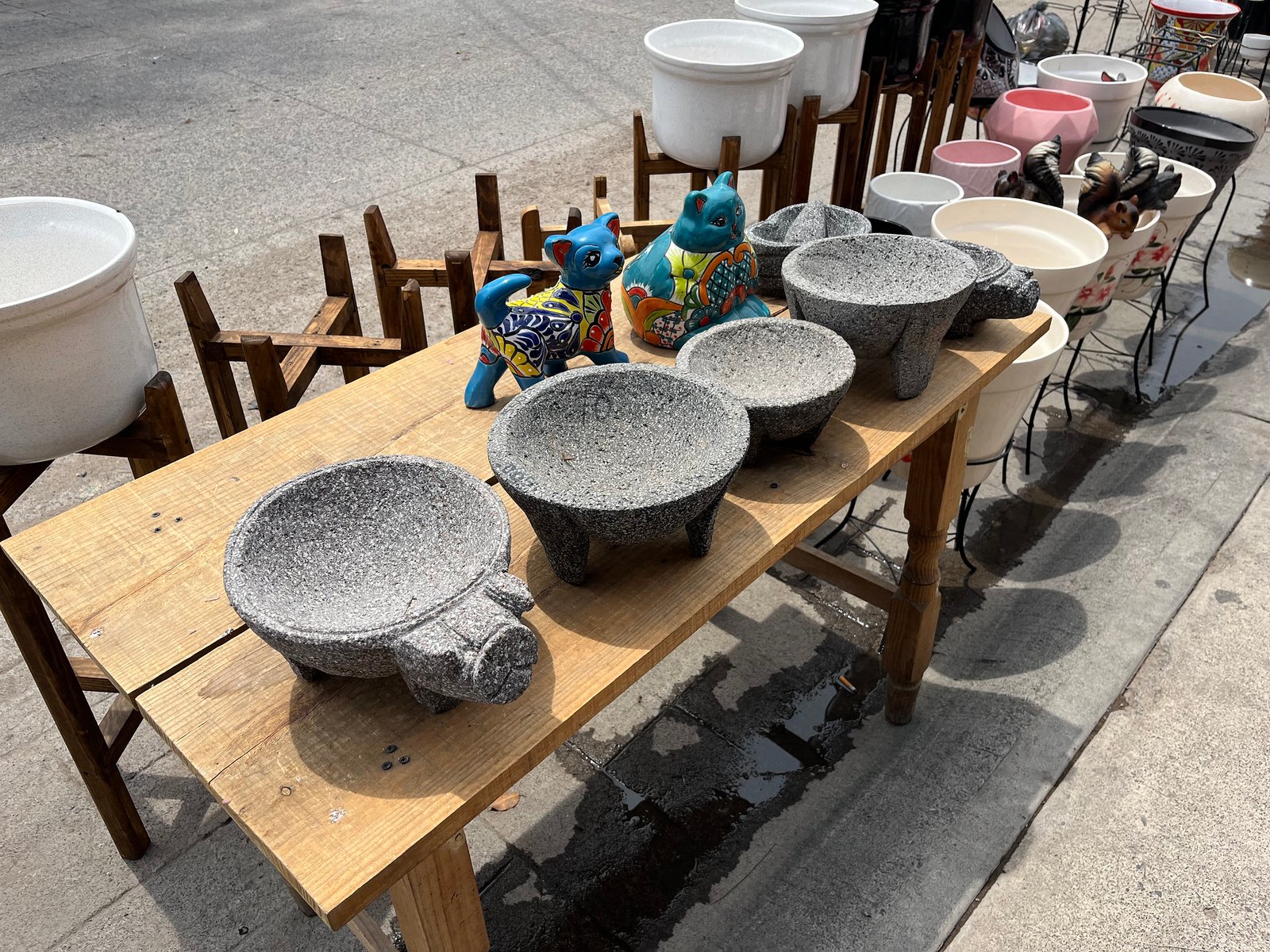
Later that evening, while making our way through the TSA security line at Mexico City Airport, I spotted a large glass display case showing off all the items that travelers were not allowed to bring onboard in carry-ons. The top shelf was a bit over the top with a gun, a grenade, and a bright red cartoon-style dynamite stick. The second shelf displayed a knife, a machete, a hammer, and an aerosol can. The third shelf was confusing with a Molotov cocktail sitting next to a metal tortilla press.
“Look!” I laughed. “A tortilla maker! Just like the one I have at home!”
Victor, however, had gone pale.
“Do you see what’s next to it?” he whispered. “A molcajete. Just like the one I have in my backpack.”
I couldn’t believe that I didn’t spot it earlier. It was, in fact, the exact same molcajete, same color, same size, same perfectly pitted surface.
I gasped.
We both stood frozen for a moment. Then Victor, law-abiding as always, insisted we remove the offending object and simply hand it over to security. I, quite reasonably, explained that they would have to pry it from my cold, dead hands. Eventually, we reached a compromise: they could have the molcajete… but only if they found it.
We placed both backpacks on the conveyor belt and watched them roll through the X-ray machine. My heart pounded. To my delight, both backpacks emerged on the other side without being flagged.
I exhaled and grabbed mine. Victor reached for his…
“Excuse me, sir!” said a young TSA agent. “I’m going to need to examine that one.”
My excitement dissolved into dread. It was over.
She opened every zipper, examined every pocket, and eventually reached the main compartment. Her hand found the newspaper-wrapped molcajete. She… moved it aside and continued digging through Victor’s socks and T-shirts. Then she zipped the backpack closed.
My dread turned into excitement. It was over!
Victor reached again for the bag.
“Wait, sir!” she called out again. “We need to do an explosive trace detection.”
I was getting emotional whiplash.
She swabbed the backpack, inside and out, then inserted the little white cloth into a sleek gray machine. For a brief, ridiculous second, I half-expected it to beep and flash the word: MOLCAJETE. When I finally regained my senses, the inspection was over, and we walked into the terminal, molcajete still secure in Victor’s backpack.
That joy lasted exactly five minutes until we reached the first gate and saw a second security checkpoint, complete with another X-ray machine. Panic surged all over again. What if our gate had secondary screening as well? Was my smuggled molcajete still in danger?
This emotional roller-coaster continued until we reached our gate and found no additional security stations. But by this point, it was too late for me to regain any sense of stability, and I was paranoid about losing my precious cargo until we were basically home. When Victor’s boarding pass didn’t scan correctly at the gate, I was sure they had discovered the truth. When the flight attendant gave me a sideways glance during drink service, I braced for interrogation. When the Uber driver insisted we put the luggage in the trunk, I clutched both backpacks to my chest as if my life depended on it.
When we finally walked through our front door, opened the backpack, and unwrapped the molcajete, I could not believe it was still there: solid, rugged, volcanic, and absolutely perfect. I held it up over my head like a first-place trophy.
And after all this, the molcajete is not decorating my kitchen, as planned. It now sits on the high shelf in the living room, next to an intricately carved bowl from Guatemala and a gorgeous ceramic plate from Georgia. It’s one of the most prized items in our “Museum of Travel” and every time I see it, I am filled with pride and elation.
In the meantime, we are still eating store-bought guacamole and salsa. Does this make any sense? Probably not. Do I care? Also, no.

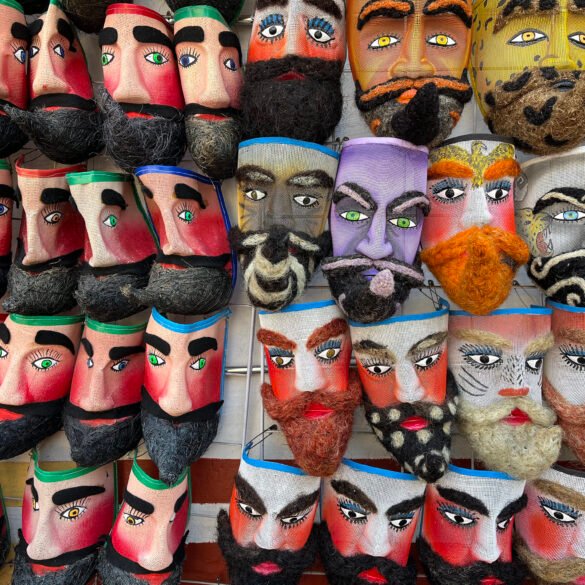
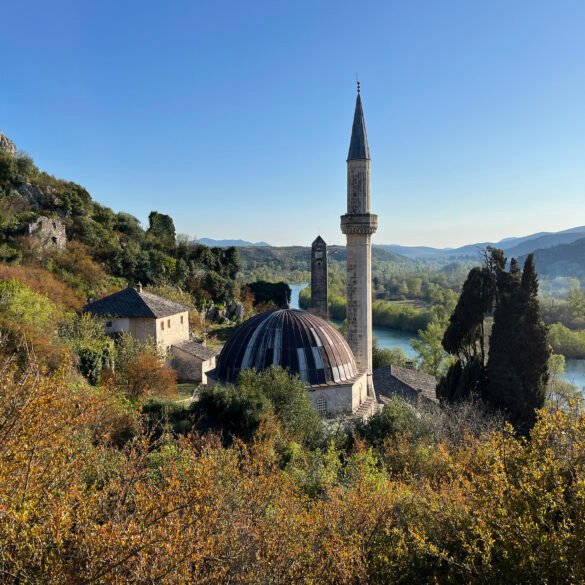
What a wonderful happy ending! But I wonder how many times did Victor consider ditching his backpack… or maybe even you or both of you on your journey home? Lol
He did initially want to trade backpacks with me at the airport and quickly decided that was a bad idea as well!